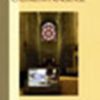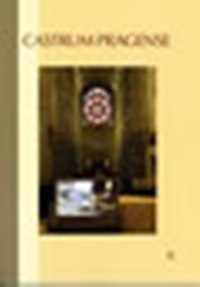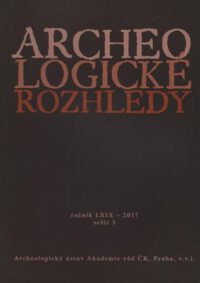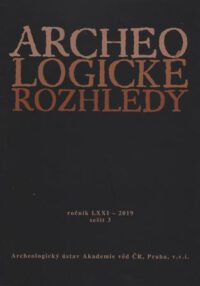This volume contains eight contributions concerning the Prague castle. The opening paper is a yet unpublished report on the history of archaeological excavations of the Prague castle by I. Borkovský. The following two articles deal with the wall paintings of the St. George basilica (Z. Všete?ková) and of the St. Wenceslas chapel in the St. Vitus cathedral (M. Bartlová). J. Frolík and V. Siglová summarize the findings and preservation of the liturgical equipment, D. Foltýn and J. Ma?íková deal with the St. Thomas chapel during the Romanesque period of the St. Vitus cathedral. The volume also contains a preliminary report on the investigation of the Royal tomb (J. Ma?íková et al.), a review of the excavations in the „Prašný most“ area (G. Blažková-Dubská) and mortar analysis of the Virgin Mary church (A. Zeman et al.).
Castrum Pragense 6
10,00 €
| Gewicht | 750 g |
|---|---|
| Bestellnr | 6-7-06 |
| Produktgruppe | Verkaufsprogramm |
| Reihe | Tschechische Literatur |
| Hauptgruppe | Castrum Pragense (Archeologický ústav AV CR) |
| Untergruppe | Castrum Pragense |
| ISBN | |
| KurzbezTitel | Castrum Pragense 6 |
| Autor | Hrsg: Jana Ma?íková-Kubková |
| Erscheinungsjahr | 2005 |
| TechnischeAbgaben | 152 pp. with figs. and tabs, English and German summaries |
| Inhalt | This volume contains eight contributions concerning the Prague castle. The opening paper is a yet unpublished report on the history of archaeological excavations of the Prague castle by I. Borkovský. The following two articles deal with the wall paintings of the St. George basilica (Z. Všete?ková) and of the St. Wenceslas chapel in the St. Vitus cathedral (M. Bartlová). J. Frolík and V. Siglová summarize the findings and preservation of the liturgical equipment, D. Foltýn and J. Ma?íková deal with the St. Thomas chapel during the Romanesque period of the St. Vitus cathedral. The volume also contains a preliminary report on the investigation of the Royal tomb (J. Ma?íková et al.), a review of the excavations in the „Prašný most“ area (G. Blažková-Dubská) and mortar analysis of the Virgin Mary church (A. Zeman et al.). |
| Besonderheiten |






